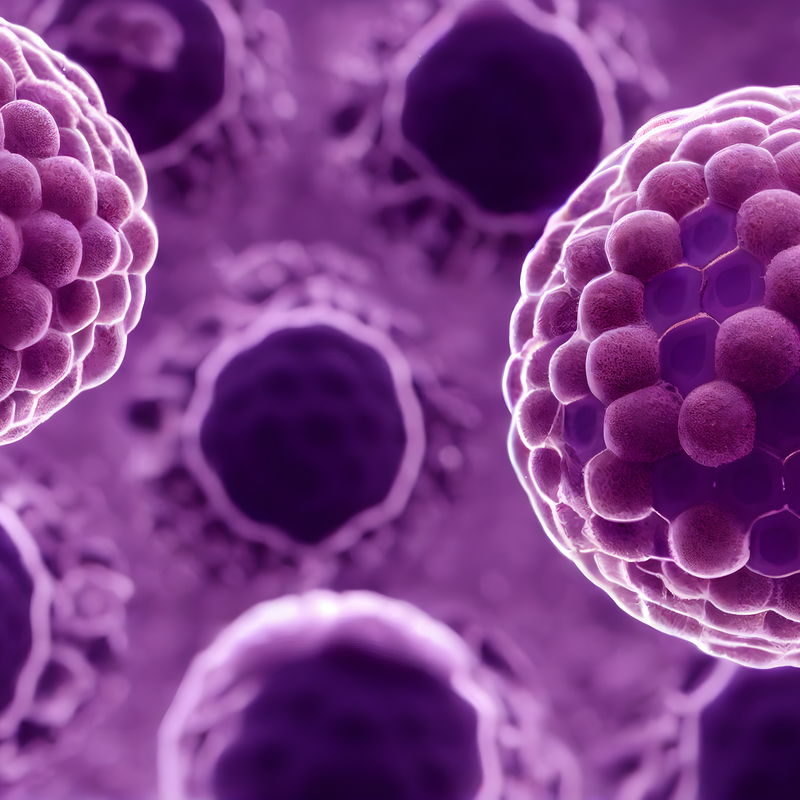
What are human endogenous retroviruses?
Human endogenous retroviruses, HERVs for short, occur in large numbers in the human genome. They became part of the genome a long time ago. Through many mutations, they have accumulated in their sequence in different ways . Among others as point mutations, insertions of other retroelements, deletions, recombinations, mini and microsatellite expansion. Because of the retroviral sequence changes, HERVs are very difficult to find. Some of these Human Endogenous Retroviruses are thought to be causative for the development of various autoimmune diseases. Especially in the case of multiple sclerosis. Others are thought to be responsible for the regulation and development of essential organs, for example the placenta in mammals. In the course of a human genome project, many thousand endogenous retroviruses were found in the human genome and initially classified into 24 different families. In the meantime, however, the language is of 31 groups, each of which arose through a single integration event. Endogenous retroviruses can be reactivated by inflammatory processes, drugs, mutations or also by infections with other viruses, for example the Epstein-Barr virus.
What are endogenous retroviruses in general?
The Endogenous retroviruses are viruses that have never gone through the complete cycle of replication, but have been passed on from one generation to the next in the genome of a host as a so-called provirus. It can be assumed that the viruses originated several generations ago due to an infection of the germline cells of vertebrates and humans.
Retroviruses possess the property of rewriting their RNA genome into a DNA thanks to the viral enzyme reverse transcriptase so that they can integrate perfectly into the genome of the host cell. Most of these retroviruses can only infect a few somatic types of cells. Some can succeed in infecting the germ cells. Thus, they can be passed on to further generations and remain in the genome of the host for a long time. For the most part, they can only remain infectious for a short period because replication by the host causes to accumulate mutations that lead to virus inactivation. A few , on the other hand, remain active. They can continuously produce exogenous virus particles . Under special circumstances, remobilisation can occur so that the retroviruses transpose.
Inevitably the involvement of endogenous retroviruses in the development of some tumours is certain. Among others, this applies to the feline leukaemia virus and also to the human T-cell leukaemia viruses HTLV-1 and HTLV-2. In most cases, the development of leukaemia insertion mutagenesis is conditional. This means that the provirus integrates near a proto-oncogene. In feline leukaemia viruses, recombinations with endogenous retroviruses are often causative for the development of a tumour.
The role of human endogenous retroviruses in development and emergence in human tumours has not yet been clarified to date. An increased expression of human endogenous retroviruses was found in melanomas and in germ cell tumours. Also specific antibodies against human endogenous retroviruses could be detected in affected individuals.
Despite all this, it is still completely unclear whether this provirus is causally involved in tumour development and if so, how. In contrast to gammaretroviruses, human endogenous retroviruses are very complex viruses. This means that not only the envelope, the capsid and the reverse transcriptase, but also the Rev- and Rec proteins may contribute to tumour progression.
Do Human Endogenous Retroviruses Contribute to the Development of Multiple Sclerosis?
Researchers repeatedly link multiple sclerosis, or MS for short, and the human endogenous retroviruses. MS is a demyelinating CNS disease with an unknown cause. MS causes different symptoms such as motor, sensory and cognitive disorders.
Multiple sclerosis is characterised by infiltration of immune cells. Also by the loss of myelin sheaths and focal inflammation. This results in injuries of the grey and white matter as well as brain atrophy. The main cause, but not exclusive, of progression and the later disease stage is axonal degeneration, which leads to irreversible deficits.
A connection between MS and the endogenous retroviruses was discovered in 1989. This was done on the basis of analysed primary leptomeningeal cell cultures, which were detected as isolation from MS patients. These virus particles were initially called MS-associated retroviruses. However, in later studies it was found that these viruses were in fact human endogenous retroviruses. Many studies were able to prove that expression and activation of otherwise dormant human endogenous retroviruses and the associated production of encoded envelope protein trigger an immune response.
Meanwhile, there is a large body of evidence that the endogenous elements of viruses, act via virus particles or also via the proteins. This can in connection with a diagnosed degenerative CNS disease have negative influences on the course of the disease.
However, researchers are now fairly certain that the human endogenous retroviruses are not only involved in the development of multiple sclerosis , but also in at least two other diseases, namely :
- ALS: Amyotrophic Lateral Sclerosis - This is a neurodegenerative disease that affects very specific groups of nerve cells: the motor neurons that form the motor nerve cells. These are located in the spinal cord and in the brain and are responsible for controlling the muscles.
- Schizophrenia - This is a very severe mental illness, which is associated with many impairments due to fundamental and temporary disturbances of perception, thinking and experience. Also typical for this disease is the loss of reference to reality.
According to scientists
, the resurgence of the human endogenous
retroviruses is related to the manifestation as well as the progression of the above
mentioned diseases. However, at this stage of
research, this assumption cannot be proven beyond doubt. Due to
this, many more years will pass before scientists and
researchers can provide 100% results and findings.
